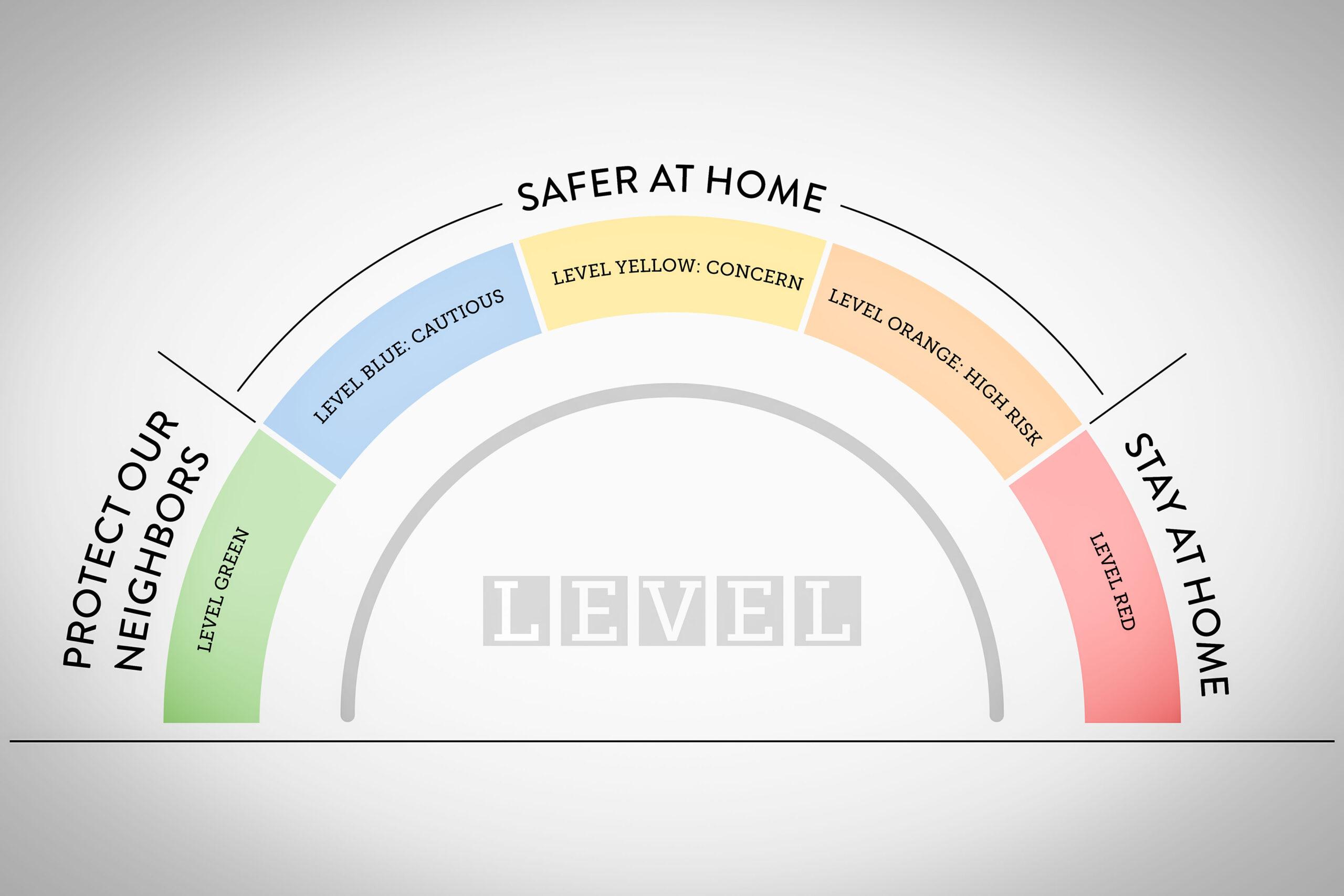
With cases and hospitalizations rising, and the state shifting toward letting counties take more of the lead on the response to the coronavirus, Colorado has now changed the way it classifies the seriousness of the pandemic.
In the biggest change, a new public health order released Monday evening makes clear that local public health and school district officials will decide whether students should attend in-person classes or virtual lessons online.
"This clarifies that local districts are able to make determinations on how to structure the format of education based on local factors," the state health department said in a release accompanying the new order.
The new rules also declutter the five-step, color-coded matrix classifying the severity of the outbreak in different counties. Instead of having three different levels of "Safer at Home" status, the dial will now classify local conditions simply as green, blue, yellow, orange or red.
“We are at a pivotal juncture. We need to change course in November to prevent more Coloradans from getting severely sick,” said Jill Hunsaker Ryan, executive director of the Colorado Department of Public Health and Environment in a release that accompanied the new order. “We need everyone to fully participate in mitigation tactics — like wearing a mask, distancing a minimum of six feet from others, and not interacting with other households — if we are to suppress the spread of COVID-19 in advance of the holiday season.”
Gov. Jared Polis has gradually given local public health officials greater leeway to set the rules for their areas, using guidance from the state, rather than issuing statewide orders. In an interview with The Denver Post Monday, Polis said he prefers a regional approach to the virus, which can be widespread in urban areas even while having little impact in rural parts of the state.
That has been particularly true in the approach to reopening schools after Polis issued an order in the Spring shutting down in-person attendance statewide. Now, each district is making decisions in consultation with local public health agencies but overseen by state guidelines.
The state is now in a "third wave" of COVID-19, with rising case numbers, positivity rates, hospitalizations and, now, deaths occurring in both urban and rural parts of the state.
Under the new color-coded guidelines, any community classified as blue, yellow or orange must limit private gatherings to no more than 10 people from no more than two households.
Other restrictions include:
- At the green level, "Protect our Neighbors," indoor restaurants and bars may be open but are restricted to 50 percent of capacity or 500 people, whichever is lower. Churches have the same restriction for indoor services, but outdoor services are always allowed with six feet of social distancing between congregants.
- At the blue level, "Safe at Home," bars are closed, and indoor restaurants must reduce crowds to no more than 175 people or 50 percent capacity, whichever is lower. Gyms are reduced to 25 percent of capacity or 75 people, whichever is lower.
- At the yellow level, indoor restaurants drop to 50 percent of capacity or 50 people. Higher education is encouraged to increase social distancing.
- At the orange level, indoor restaurants are reduced to 25 percent of capacity. Group sports are reduced to 10 people or fewer even outdoor.
- At the red level, "Stay at Home," restaurants are back to take out or delivery only, or outdoor dining. Churches are restricted to 10 people or fewer with social distancing. Private gatherings of any size are prohibited and schools are encouraged to do only remote learning.









